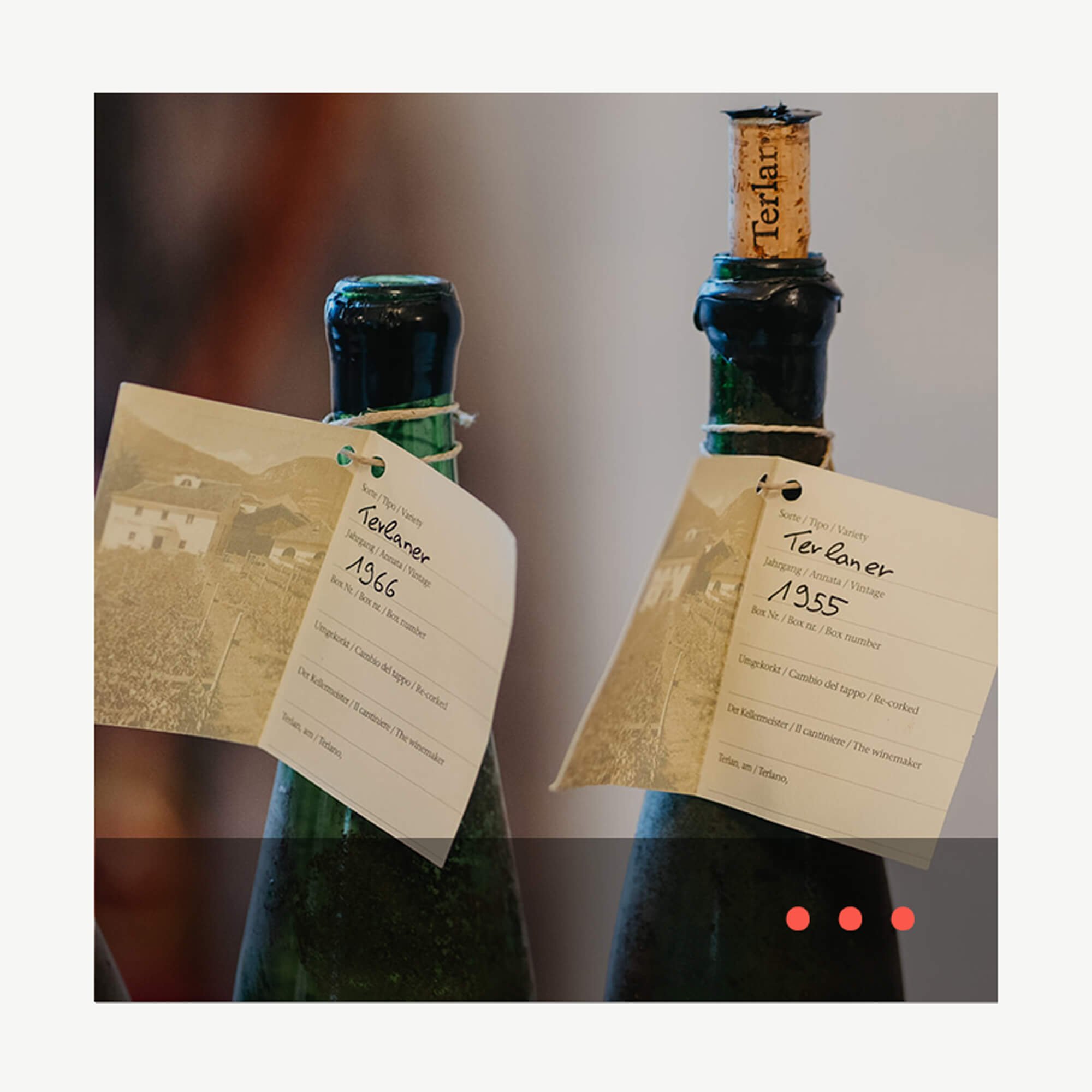✒ Sustainability with Viña Santa Rita
In conversation with Elena Carretero, Corporate Affairs and Sustainability Director at Viña Santa Rita
Brought to you by our Founder Sponsor SANTA RITA ESTATES.
Wine producers across the world know that they have to embrace sustainable viticulture in the face of climate change. The Wine Conversation asks Elena Carretero of Chile’s premier winery Viña Santa Rita five questions on the work they are undertaking in the vineyards and beyond, as they embrace a sustainable future.
Water is a major issue for Chilean wineries as climate change impacts the globe. What is Santa Rita Estates' sustainable approach to water conservation?
At Santa Rita Estates, 99% of our vineyards are equipped with drip irrigation systems, providing 90% efficiency in water use, which allows us to optimize resources and prevents unnecessary waste. We also use advanced tools that precisely measure the water needs of our vines, enabling us to tailor irrigation to the specific conditions of each vineyard.
We promote soil health through regenerative practices that enhance its water-retention capacity and resilience to adverse climate conditions, as well as carefully selecting grape varieties best suited to the terroir and specific characteristics of each vineyard, such as water availability and soil type. This strategy reduces the need for additional irrigation and encourages the vines’ natural adaptation to the environment.
In our wineries, we use innovative projects that reduce water usage and promote water recycling, which minimizes our environmental footprint. At the same time, we collaborate with our employees and surrounding communities to raise awareness about water conservation, reaffirming our commitment to sustainability and social responsibility.
Biodiversity and soil management are essential for a healthy vineyard. What practices are Santa Rita Estates embracing?
We constantly implement strategies to conserve and enhance the physical, chemical, and biological properties of our soils. For example, all our vineyards have cover crops and/or native vegetation, which reduces soil erosion and improves soil quality. Each vineyard has been thorough studied to determine the most efficient plant species to use. Additionally, we are investigating the microbiological aspects of our soils, to evaluate the positive effects of promoting biodiversity on our fertilization plans and pest and disease management.
These efforts reflect our commitment to not only produce exceptional wines, but also contribute to the balance and sustainability of the surrounding ecosystems.
Chaotic weather patterns, including wildfires, pose significant challenges to wineries. How does Santa Rita Estates address unpredictable weather?
We take several proactive approaches to address the effects of unpredictable weather and protect our vineyards and their surroundings. Some examples are:
Fire prevention and response. We have robust fire prevention and response plans, including the creation of firebreaks, vegetation management around vineyards, and emergency procedure training for our teams. This plan not only safeguards our vineyards, but also protects the architectural heritage of our estate, which houses artworks and pieces from the past century, as well as the invaluable pre-Columbian collection of the Museo Andino.
Vineyard diversification. Our vineyards are strategically located in different valleys across Chile, minimizing the risks associated with extreme weather in any single region.
Advanced climate monitoring. We utilize sophisticated climate-monitoring systems and data analysis to anticipate weather events and adapt our agricultural practices, such as irrigation, pruning, and harvest schedules, accordingly.
Regenerative farming practices: Techniques like improving soil health and water retention help mitigate the effects of heat stress and drought on the vines. We also select grape varieties and rootstocks that are resilient in adverse climate conditions.
Research projects. We continually participate in and evaluate research initiatives that explore these innovative solutions
All these measures ensure our ability to face the challenges posed by a changing climate while maintaining the quality of our wines and the health of our environment.
How are you reducing its carbon emissions?
Santa Rita Estates is fully committed to sustainability and reducing its carbon footprint, and has adopted a comprehensive approach that spans our direct operations and entire value chain.
We have, for example, joined the Science Based Targets initiative (SBTi) to align our greenhouse gas emission reductions with the Paris Agreement. Our goal is to achieve these reductions by 2033.
Emission breakdown: Approximately 10% of our emissions come from Scope 1 (direct emissions), 5% from Scope 2 (consumption of purchased electricity), and 85% from Scope 3 (indirect emissions from our value chain). Scope 3 emissions include all indirect emissions across the value chain, except for purchased electricity. This covers emissions from raw materials, packaging (like glass bottles), transportation (upstream and downstream), waste management, employee travel, product use, and final treatment, such as recycling or disposal. These activities highlight the importance of addressing Scope 3 in sustainability strategies, and we are exploring innovative solutions with suppliers, such as using recycled glass and more efficient manufacturing processes. Additionally, we are collaborating with our suppliers, exploring the use of non-conventional renewable energy sources for glass bottle production and its transportation, even evaluating the feasibility of using green hydrogen.
Renewable energy. We have made significant strides in adopting renewable energy. Currently, International Renewable Energy Certificates (IRECs) cover 45% of our total electricity consumption, complemented by on-site solar-energy installations, substantially reducing our reliance on fossil fuels.
Regenerative agriculture. In our vineyards, we are reducing agrochemical use through regenerative practices that not only decrease emissions but also improve soil health and promote carbon capture.
How does Santa Rita Estates contribute to social responsibility in surrounding communities?
We recognize that social responsibility covers more than our operations, and encompasses the development, well-being, and empowerment of the communities around us. In 2012, we began the Territorial Valorization program, which aims to promote local attributes and create a sense of belonging and pride within the community, encouraging local development and social integration while ensuring the proper use of natural and cultural resources in the area. It consists of the following projects:
Harvest Project. Classes and workshops led by their teachers and our professionals are held in school classrooms over a two-month period, integrating the curriculum with connections among the different subjects and winemaking. In History, Geography and Social Studies, for example, they study the origins, customs, and progression of wine back to 6000 BC, while in Language they learn about poetry and wine traditions, and in Natural Sciences they learn about the chemical processes of making wine.
Knowing the Biodiversity of my Territory. This project aims to get children to appreciate local flora and fauna, and thus generate a sense of pride and awareness of the importance of local biodiversity and the role they can play in caring for it.
Santa Rita´s Season Concert Cycle. Since 2012, the Claro Vial Foundation, in partnership with Viña Santa Rita, hosts the Season Concert Cycle, an initiative under the Law of Cultural Donations. Each cycle consists of concerts in the four seasons of the year, with a presentation for the general public and an extension concert in a masterclass format for students of the schools in the communities surrounding Viña Santa Rita. To date, approximately 300 students have participated in each concert, totaling 6,800 attendees.
Culture. Our Andean Museum, with over 3,000 pre-Columbian artifacts, attracts around 1,500 visitors annually, offering a unique educational experience that promotes the appreciation and preservation of our rich cultural heritage. Since 2012, we have been developing this programme in partnership with the Corporación de Empresarios del Maipo (CEM, Maipo Business Corporation), which aims to bring the community closer to culture through educational visits to the Museo Andino. Socially vulnerable primary and secondary school students, together with their teachers and families, learn in a different, playful and interactive way, about the value of the area’s culture, creating a sense of belonging and appreciation of the legacy of our Indigenous Peoples.
Local Development. We actively support local entrepreneurs and artisans by providing them with platforms to showcase and sell their products during events like Wine Day and Heritage Day, which attract approximately 5,000 visitors each. These opportunities foster further cultural appreciation and connect local businesses with a broader audience, boosting their economic potential.
For Santa Rita Estates, our sustainability vision, like our vineyard and winemaking initiatives, is deeply rooted in strengthening the local economy and unceasingly promoting practices that respect and value the cultural and natural richness of our surroundings. It is all one and, we believe, the right one.
RELATED POSTS
Keep up with our adventures in wine







John Stimpfig tastes the latest releases from the world-famous Biondi Santi estate.